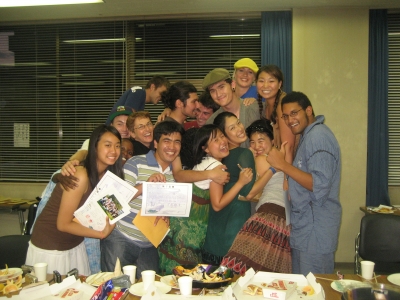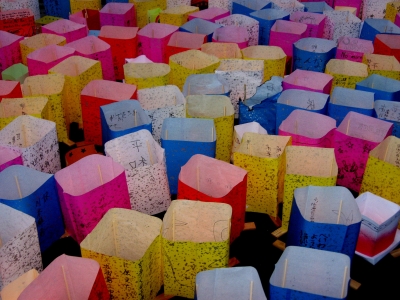Less than two months. It was a short amount of time but enough for a bunch of strangers from fourteen countries to come together. During that time we learned, we played, we had fun, we got frustrated, we overcame, we laughed, and we cried together. And as a group, we successfully completed the World Campus International summer program. Yay!! Congratulations!! 😉
There were great times where everything was peachy and fun. From hiking Mt. Taro, to the walking tours of Tokyo, to attending the Peace Ceremony in Hiroshima. Everything was not always super happy though. There were also demanding times where we met challenges. From our first “Thank-you Event” rehearsal, to our struggles in “getting over the rope”, to our final goodbyes at the airport. Those were difficult times but we always somehow prevailed as a group.
It is hard to imagine the amazing experiences we would share when everyone first stepped off the bus at the Music Village in Ueda City. Everyone seemed so different and I did not know how the group would mesh together or how long it would take. Living together at the Music Village for the first few days obviously allowed us to connect sooner but I would like to commend everyone for being so open and personable to those that would join later. This program can only succeed if everyone works together, plus it is also a lot more fun when everybody gets along. Thus, it was a pleasant surprise for me to see such harmony in so little time.
Although WCI is not an academic program, it is undeniable to state that we all learned much during the tour. Staying with host families offered us the best opportunity to experience Japanese life and culture. What we have learned was not just relegated to Japanese culture either. Because we were such a diverse group, we were able to learn a little bit about the other countries too. We were all put in an uncomfortable situation in a country foreign to many of us with so many different personalities. Such as life, sometimes the personalities conflicted, yet we all learned about ourselves and how to handle such uneasy situations.
It might be cliché to say, but our little community was much like a family. Every one of us went through tremendous highs and deflating lows but we were always there for each other. Although we are parted now, our shared experiences will never be forgotten. Thank you all for the wonderful memories. It is very difficult not to get overly nostalgic when reflecting back on the tour but it was truly a super happy sunshine funtime.
(Guang Yeung, USA)




